Watch this
Watch the video and download the technician notes from the Education in Chemistry website: rsc.li/xxxxxxx
An understanding of the attractive and repulsive forces that act between charged particles is vital for making sense of chemistry. It’s for this reason that I find electrolytic activities to be extremely powerful experiences for students. The CLEAPSS microscale conductivity indicator has been a game changer, allowing students to observe redox reactions occurring at electrodes without bulky kit or wiring. Ions can be observed in motion through droplets, and even motor effects can be shown with the introduction of a magnet.
The classic demo showing the motion of both positive and negative ions in the same experiment calls for the use of relatively large (0.1 mole) quantities of toxic copper and chromium(VI) salts, and a fiddly setup involving layering solutions of different densities. CLEAPSS has received reports of this demonstration giving poor results and taking up to half an hour to work without the use of unreasonably high voltages due in part to the high viscosity of the gel used in the traditional method.
You can achieve a faster result with this simpler set-up, developed by Adolf Cortel. It can be run and even reversed in a short lesson with ~100 micromole quantities of salts.
Ready for more exciting demonstrations? Register for free to get more Exhibition chemistry articles, practical videos, ideas for your classroom and teaching tips.
Kit
For the electrolyte solution
- 2 g ammonium chloride (causes severe eye irritation)
- 100 cm3 of 2 mol dm-3 ammonium hydroxide solution (corrosive to eyes, skin irritant)
For the copper chromate mixture
- 0.2 g potassium dichromate(VI) (toxic, causes severe skin burns and eye damage, may cause breathing difficulties by inhalation, may cause genetic defects, may cause cancer, damage fertility or the unborn child, causes organ damage through prolonged or repeated exposure, may intensify fire)
- 0.25 g hydrated copper(II) sulfate(VI) (harmful, irritating, causes serious eye damage, very toxic to aquatic life with long-lasting effects)
- 1 cm3 concentrated ammonia (35%/‘880’) (corrosive, irritating, causes severe burns and eye damage, toxic by inhalation)
For the demonstration
- 20 V DC power supply
- Wires and crocodile clips
- Two steel paper clips
- Two petri dish bases (for depth)
- Filter paper or chromatography paper

Preparation
Copper(II) chromate(VI) mixture
Wear splash-proof goggles and disposable gloves. Avoid raising dust, working in a fume cupboard with the extractor off and the sash partially down. Weigh out 0.2 g of potassium dichromate(VI) and 0.25 g of hydrated copper(II) sulfate(VI) into a glass sample vial. Add 1 cm3 of concentrated ammonia (open the bottle cautiously as pressure may have built up) with a dropping pipette and stir with the tip to form a green suspension. Wipe the area thoroughly with a damp cloth before proceeding.
To prepare the copper(II) chromate(VI) mixture, wear splash-proof goggles and disposable gloves. Avoid raising dust, working in a fume cupboard with the extractor off and the sash partially down. Weigh out 0.2 g of potassium dichromate(VI) and 0.25 g of hydrated copper(II) sulfate(VI) into a glass sample vial. Add 1 cm of concentrated ammonia (open the bottle cautiously as pressure may have built up) with a dropping pipette and stir with the tip to form a green suspension. Wipe the area thoroughly with a damp cloth before proceeding.
This produces enough for approximately five demos.
Electrolyte solution
Work in a well-ventilated lab, wearing splash-proof goggles. Dissolve 2 g of ammonium chloride in 100 cm3 of 2 mol dm-3 ammonium hydroxide solution and store in a labelled bottle.
When preparing the electrolyte solution, work in a well-ventilated lab, wearing splash-proof goggles. Dissolve 2 g of ammonium chloride in 100 cm3 of 2 mol dm-3 ammonium hydroxide solution and store in a labelled bottle.
Health and safety and disposal
- CLEAPSS members should consult PS067m and HC006.
- Work in a well-ventilated room as ammonia vapour will diffuse away from the electrolyte.
- Wear goggles.
- Never allow chromate(VI) solutions or spills to dry out – wipe up with a damp cloth immediately.
- Electrolyte solution can be reused if no significant changes have occurred. If you need to dispose of it then mix with at least three times the volume of water to dilute to 0.5 M and rinse down a foul water drain (a fume cupboard may be needed on a warm day).
- Residues from an empty copper chromate mixture can be washed down a foul water drain with plenty of water. Otherwise, carefully add 20 cm3 of 1 M H2SO4 to acidify before adding a spatula of sodium metabisulfite to completely reduce any chromium(VI) to chromium(III) and wash the resulting solution down a foul water drain with plenty of water.
In front of the class
Work in a well-ventilated lab and wear disposable gloves. Place two petri dish bases next to one another, bend the paper clips so that they can sit over the edge of the dish and be held with a crocodile clip attached to a wire for connection to the terminals of the power supply (see image). Fill the petri dishes approx 5 mm deep with electrolyte so that the paper clips inside the dishes are submerged for electrical contact. Place a rectangular piece of filter paper or chromatography paper (approx 8 × 2 cm) so that one short side is submerged into each of the two dishes. The electrolyte will absorb onto the paper, but you may need to add a few drops in the centre to moisten it evenly. Dab off any excess liquid.
Using a dropping pipette, draw up a few drops of the suspension mixture from the sample vial and draw a thin green line of copper chromate mixture in the centre of the paper, perpendicular to the direction of current.
Set the DC power supply to 20 V. In less than five minutes a band of yellow will move towards the positive terminal and a band of blue will move towards the negative. Ensure you turn off the current before the bands reach the bulk electrolyte if you wish to reuse it. The current can be reversed to flip the direction of the movement of the bands, causing the colours to mix once more.
Top tip
The concentration of solutions of ammonia will drop over time, so if an orange-brown sludge is produced in the sample vial rather than a bright green suspension, then your concentrated ammonia has lost much of its potency – simply adding 0.5 cm3 fresh concentrated ammonia should rescue the mixture.
Teaching goal
For younger students it’s good enough to talk about blue Cu2+ ions and yellow CrO42- ions. From the chemistry perspective, a prediction of the direction of movement of these oppositely charged species would suffice. Before turning on the current it’s worth asking students to consider how quickly they think the colours will move, given the apparent instantaneous nature of a light bulb turning on when a switch is pressed (if they’ve seen the NH3/HCl diffusion demonstration, they may speculate as to whether the Cu2+ and CrO42- ions move the same distance) – this can reinforce their mental models of charge movement in a circuit. To help students grasp the concept of charge movement, introduce them to PhET circuit construction kit simulation that shows charge carriers in a wire. This should allow them to recognise that other charge carriers must be in the electrolyte.
For younger students it’s good enough to talk about blue Cu2+ ions and yellow CrO42- ions. From the chemistry perspective, a prediction of the direction of movement of these oppositely charged species would suffice. Before turning on the current it’s worth asking students to consider how quickly they think the colours will move, given the apparent instantaneous nature of a light bulb turning on when a switch is pressed (if they’ve seen the NH3/HCl diffusion demonstration, they may speculate as to whether the Cu2+ and CrO42- ions move the same distance) – this can reinforce their mental models of charge movement in a circuit. To help students grasp the concept of charge movement, introduce them to PhET circuit construction kit simulation (bit.ly/3v6yZ21) that shows charge carriers in a wire. This should allow them to recognise that other charge carriers must be in the electrolyte.
Close inspection of the paper clips when the current is flowing will indicate the presence of other ions. When the current is reversed, students can observe the opposite direction of ion migration and the change in behaviour at the paper clip terminals. What predictions might the students have for the differences seen in a similar experiment performed with singly charged ions?
Older students will appreciate that the copper ion does not exist as a freely-moving entity in solution, but rather as a complex ion, and that the high concentration of ammonia in the green mixture will lead to the formation of the [Cu(NH3)4(H2O)2]2+ complex ion, which has a much deeper blue colour than the hexaaqua complex. This aids the visibility of the demonstration. They may also have explored the acid–base equilibrium between the orange Cr2O72- ion and yellow CrO42- ion, which is worth drawing their attention to.
Declan Fleming
Downloads
Technician notes The movement of ions
Editable handout | Word, Size 75.1 kbTechnician notes The movement of ions
Handout | PDF, Size 0.13 mb




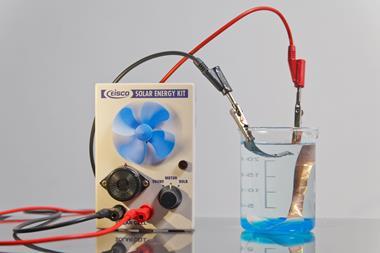


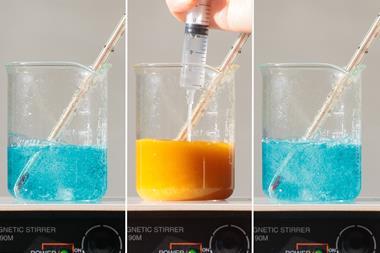
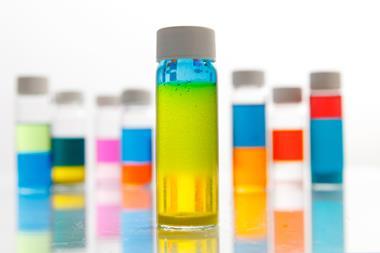


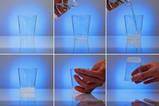




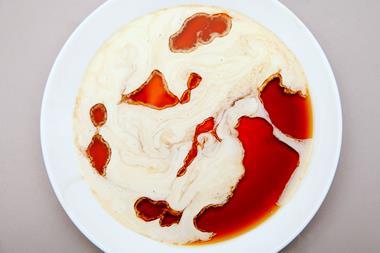







1 Reader's comment